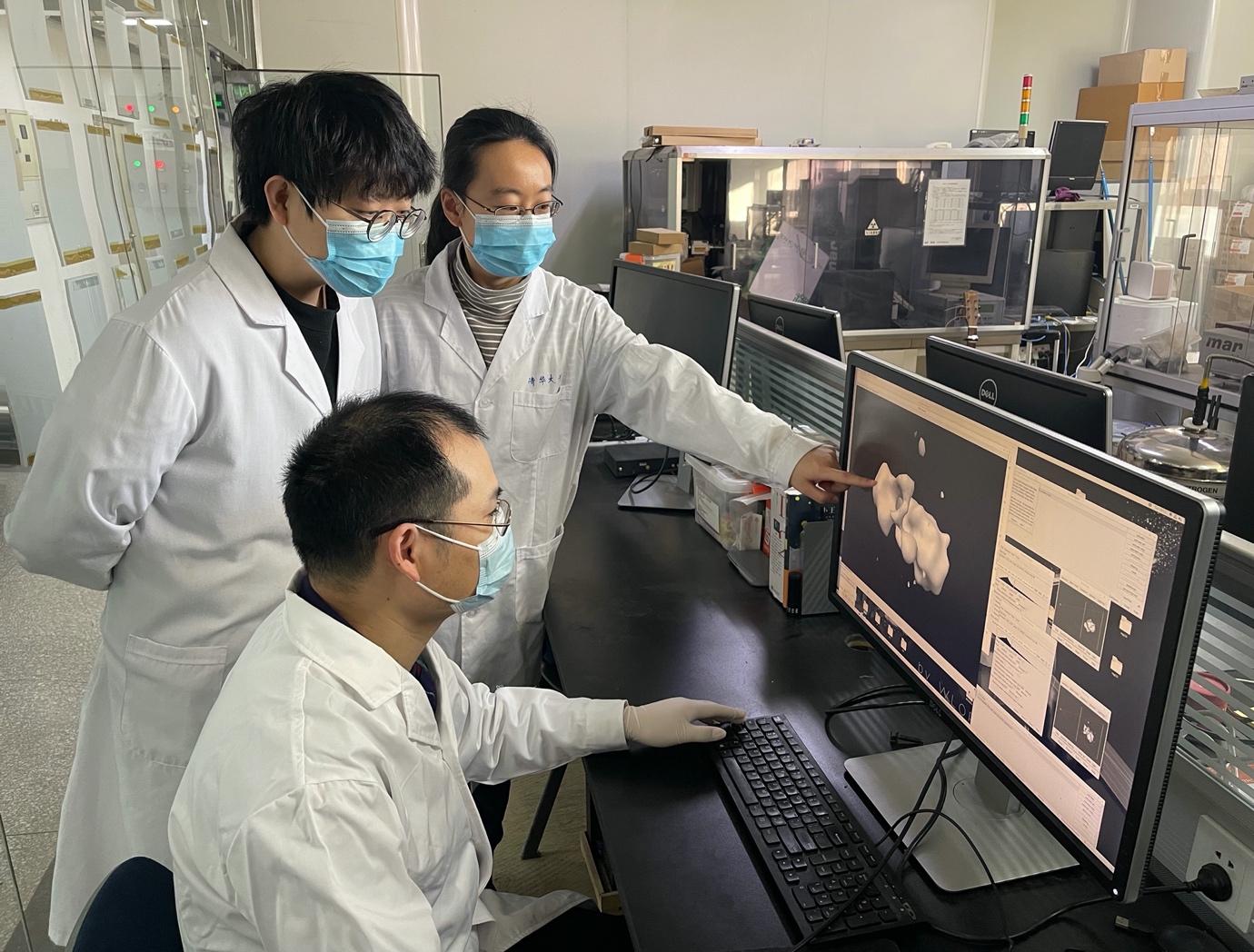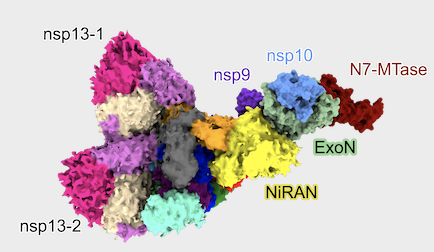Insights into the transcription and replication mechanisms of SARS-CoV-2 offer a new way to fight it.
New insights into viral replication and transcription, led by researchers at Tsinghua University1,2, may help pinpoint fresh targets for drugs and vaccines against emerging SARS-CoV-2 variants.

Tsinghua researchers have revealed key structures of the Replication-Transcription Complex that are essential to the SARS-CoV-2 lifecycle.
Researchers led by Zihe Rao and Zhiyong Lou have used a cryo-electron microscope to image the complex of proteins that comes together inside infected cells of COVID-19 patients, enabling the virus to transcribe RNA copies of the virus gene sequence and replicate. What they have discovered may offer insights into thwarting the virus.
The pandemic has been prolonged by the emergence of many new SARS-CoV-2 variants, often with mutations in the ‘spike’ protein the virus uses to enter cells. As many COVID-19 vaccines are targeted at the spike protein, these mutations have helped some variants evade the immunity conferred by vaccines.
Much less prone to mutation, however, is the Replication-Transcription Complex – the set of viral proteins that come together during replication to allow SARS-CoV-2 to proliferate.
“The catalytic residues of Replication-Transcription Complex proteins are almost identical, or at least very similar, among different SARS-CoV-2 variants,” says Lou. “Which suggests the potential to develop broad-spectrum antiviral drugs that target the replication process.”

Liming Yan (centre) and his colleagues analyze cryo-electron microscope data on an enzyme that catalyzes key steps in SARS-CoV-2 replication.
RNA cap of SARS-CoV-2
Tsinghua researchers have a long track record of studying the internal mechanisms of coronaviruses. Co-leader of the study, Zihe Rao, has worked in the field since the emergence of SARS-CoV (the virus that causes the disease SARS) in 2003. “SARS-CoV-2 shares high similarity with SARS-CoV,” says Lou, meaning they could bring their expertise to bear on studying the newly-emerged virus.
One key feature of SARS-CoV-2 RNAs, as synthesized by the Replication-Transcription Complex during replication, is a protective ‘cap’ affixed to one end of the RNA strand. “This structure is important to the stability of viral RNA and can help it escape the host’s innate immune response,” says Lou.
The complex constructs the cap in a four-step process. The role of the protein that catalyzes the second step of the capping process, called nucleotidyl transferase domain (NiRAN), was a mystery until this study1. “We showed that the NiRAN domain in the replication enzyme, viral polymerase nsp12, is indeed the enzyme that catalyzes the second capping action,” Lou explains.

The NiRAN domain in the replication enzyme, viral polymerase nsp-12 (above), catalyzes the second of four stabilizing capping steps in SARS-CoV-2 RNA replication.
In a subsequent study, the group also revealed the mechanism underlying the third capping action and the proofreading process (to ensure the SARS-CoV-2 sequence is accurate) are found in the Replication-Transcription Complex2.
Assembling a Replication-Transcription Complex in the lab, in order to take the cryo-electron microscope image with the molecule in position, was a great challenge, Lou says. “We had to test many different conditions to catch these temporary complexes,” he says.
“These studies were highly dependent on the close coordination of more than 10 researchers,” says Lou. For example, for one cryo-electron microscope data set, his team worked intensively for more than three days and nights to simultaneously freshly prepare the proteins required.
Understanding that the nsp12-NiRAN region plays a key role in stable virus RNA cap formation offers new, highly stable targets for researchers seeking drugs to inhibit SARS-CoV-2 replication. Importantly, they are also expected to work against new variants. “We are now collaborating with researchers, including medicinal chemists, and hope to identify leading compounds for drug development soon,” says Lou.
References
1. Yan, L., Ge, J., Zheng, L., Zhang, Y., Gao, Y., et al. Cryo-EM Structure of an Extended SARS-CoV-2 Replication and Transcription Complex Reveals an Intermediate State in Cap Synthesis. Cell 184, 184–193 (2021)
doi: 10.1016/j.cell.2020.11.016
2. Yan, L., Yang., Y, Li, M., Zhang, Y., Zheng, L. et al Coupling of N7-methyltransferase and 3′-5′ exoribonuclease with SARS-CoV-2 polymerase reveals mechanisms for capping and proofreading. Cell 184 (13), 3474-3485 (2021)
doi: 10.1016/j.cell.2021.05.033
Editor: Guo Lili